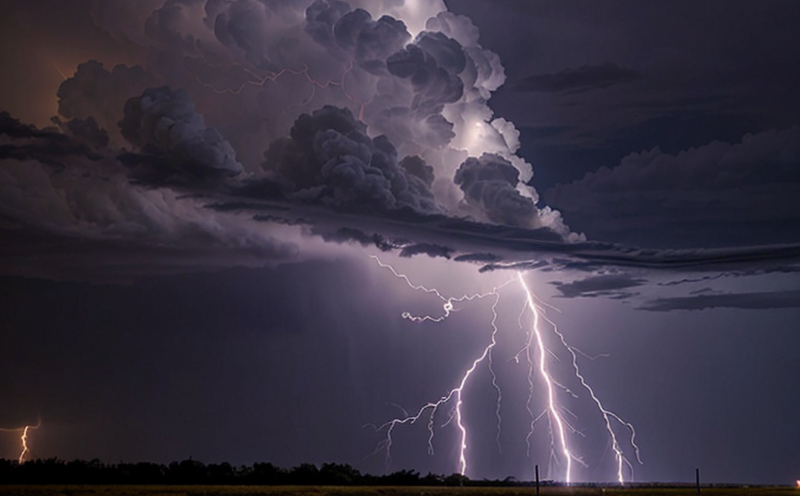Lightning arrestor inspection
The inspection of lightning arrestors is a critical process within the electrical and electronic systems sector. Lightning arrestors are designed to protect electrical installations from damage caused by lightning strikes, ensuring the safety and integrity of both equipment and personnel. The primary purpose of this inspection is to ensure that these devices meet the required standards for performance and reliability.
The inspection typically involves a detailed examination of the arrestor's components, including its internal wiring, external casing, and any visible signs of wear or damage. Compliance with international standards such as IEC 60099-4 is essential to ensure that lightning arrestors perform their intended function effectively. During this process, technicians check for any physical defects, verify the correct installation, and assess the overall condition of the device.
The inspection procedure involves a series of tests aimed at assessing the performance characteristics of the lightning arrestor. These tests include measuring the resistance across key components, checking the continuity of connections, and evaluating the arcing capability under specified conditions. The aim is to ensure that the arrestor can reliably divert high-energy electrical impulses away from sensitive equipment.
Accurate documentation plays a crucial role in this inspection process. Detailed records are kept for each test conducted during the inspection, which include measurements taken, observations made, and any discrepancies noted. This documentation serves as evidence of compliance with relevant standards and provides valuable information for future maintenance or replacement decisions.
The importance of regular inspections cannot be overstated. By identifying potential issues early on, organizations can prevent costly downtime and avoid significant financial losses associated with equipment failures due to lightning strikes. Moreover, adhering to established protocols helps maintain the highest level of safety within facilities where electrical systems are in operation.
| Industry Applications |
|---|
| Broadly speaking, inspections like this find application across various sectors including telecommunications, aviation, and manufacturing. In particular, they play a vital role in protecting critical infrastructure such as communication towers, airports, and industrial plants from potential damage caused by lightning strikes. |
In conclusion, the inspection of lightning arrestors is an indispensable part of maintaining electrical and electronic systems' integrity and reliability. By ensuring compliance with industry standards and implementing rigorous testing procedures, this service contributes significantly towards enhancing overall safety and reducing risks associated with electrical hazards.
Benefits
- Enhanced protection against lightning strikes leading to reduced risk of equipment failure.
- Improved operational efficiency by minimizing unplanned downtime resulting from maintenance activities.
- Compliance with international standards ensuring consistent quality and performance levels across installations.
- Promotion of safer working environments for personnel involved in handling electrical systems.
Industry Applications
The inspection of lightning arrestors is particularly relevant to several key industries:
| Industry Sector | Specific Application |
|---|---|
| Telcos and Telecoms Providers | Ensuring robust infrastructure protection for communication networks. |
| Airports and Aviation | Maintaining safe operational conditions by safeguarding critical facilities against lightning damage. |
| Manufacturing Plants | Protecting sensitive machinery and production lines from electrical surges caused by lightning events. |
These applications underscore the importance of regular inspections in safeguarding vital infrastructure across diverse sectors, thereby contributing to enhanced safety standards and reduced operational risks.
Customer Impact and Satisfaction
The impact of lightning arrestor inspections extends far beyond mere compliance with regulatory requirements. For organizations operating within high-risk environments, these services offer peace of mind knowing that their critical infrastructure is protected against potential threats posed by natural phenomena such as lightning strikes.
A satisfied customer base often results from reliable performance and proactive measures taken to mitigate risks associated with electrical hazards. By investing in regular inspections, businesses can demonstrate their commitment to maintaining high standards of safety and quality, which fosters trust among stakeholders including employees, clients, and regulatory bodies alike.





